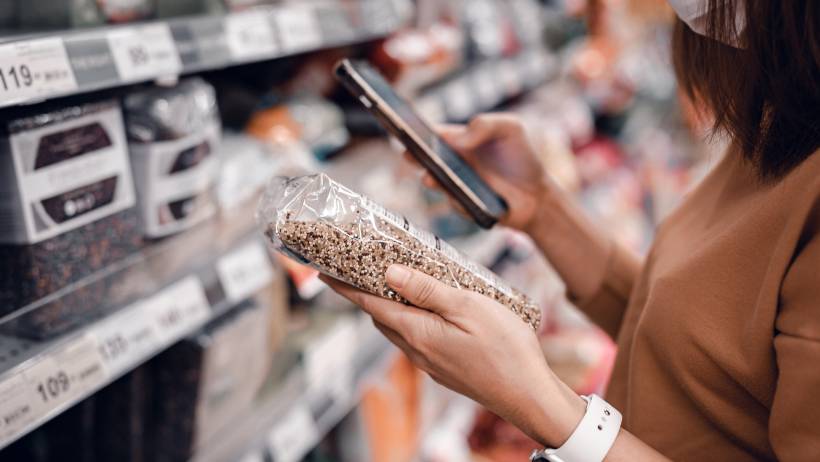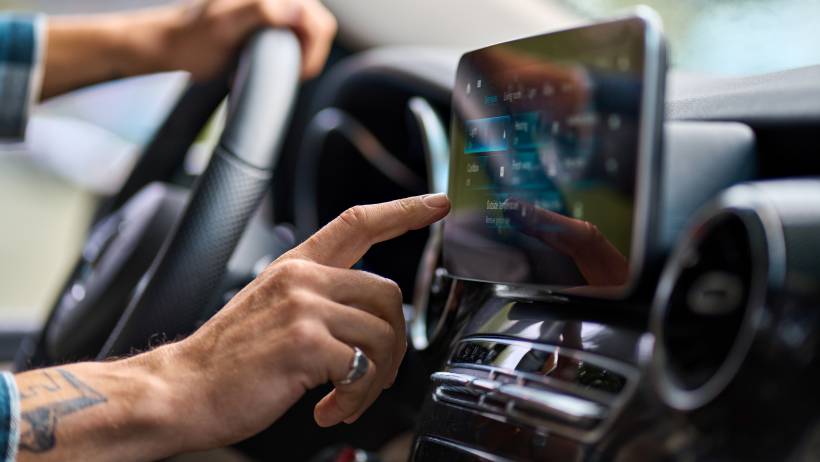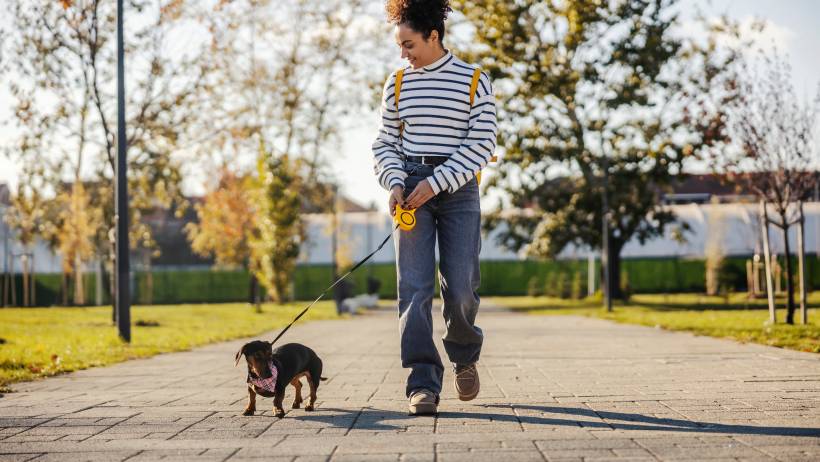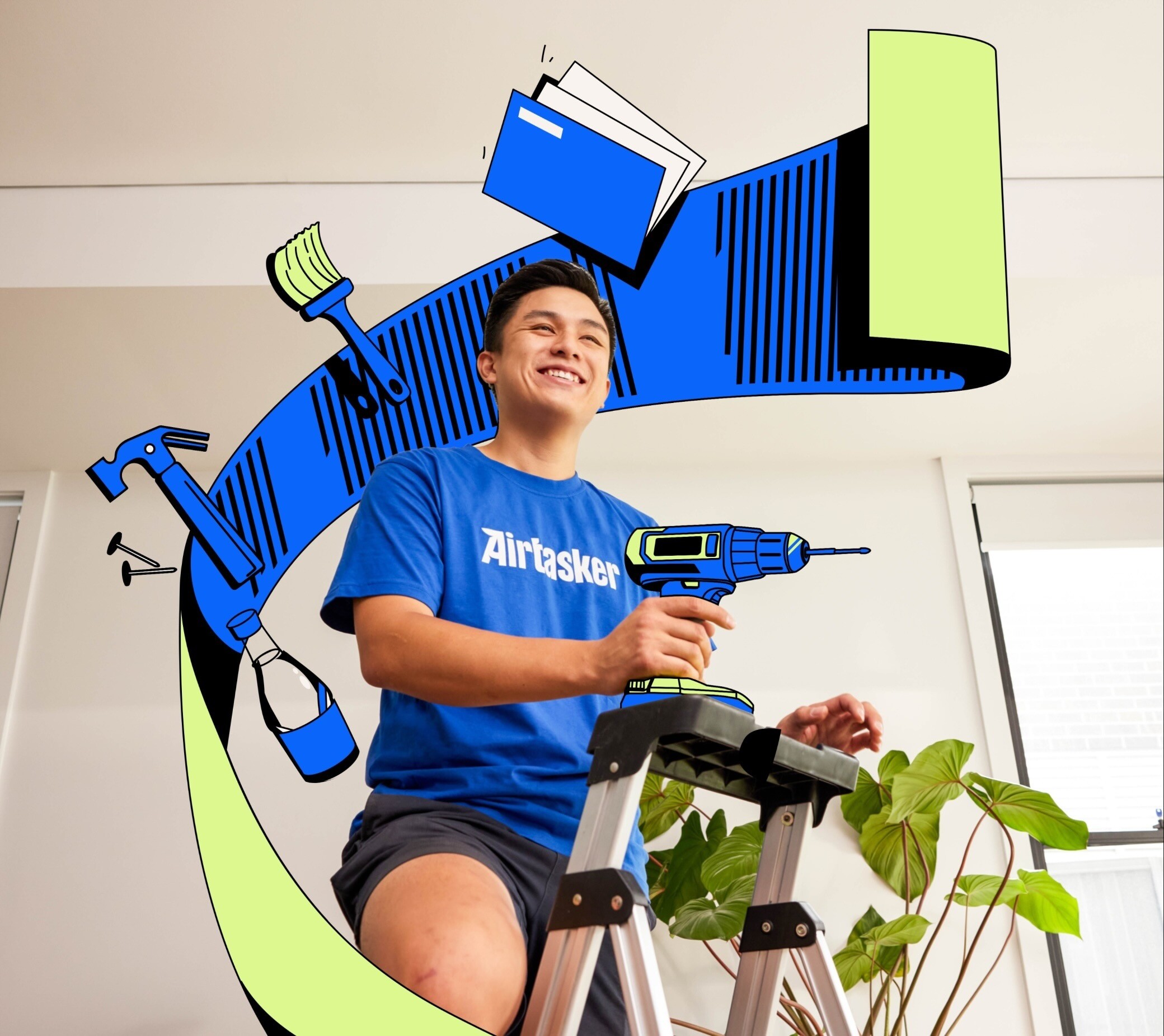
Start getting paid to run errands
Looking for a job where you can do simple tasks during your free time? Learn how to run errands for money with our guide!
Find an errandLast Updated on

Written by Angela A.
Staff Writer
Read more about our contributor
Key Takeaways
With inflation driving up living costs, nearly a million Australians now hold multiple jobs, often turning to gig work and side hustles for financial stability.
Depending on local laws, a valid Australian driver’s licence, basic insurance, and possibly a business registration may be required for errand running.
Independent errand runners often earn $15 to $50 per hour, depending on location, task complexity, and the platform they use.
With inflation driving up the cost of living, more Australians are looking for ways to supplement their income. In fact, according to the Australian Bureau of Statistics, nearly a million Australians now work multiple jobs, with many turning to gig work and side hustles for financial stability. One flexible and accessible option is to earn money running errands.
There are plenty of ways to start getting paid to run errands. This guide covers the best platforms, essential tips, and strategies to make errand running a profitable and stress-free side hustle.
What should you know about Australia’s errand running industry?
Errand running has now become a lucrative source of extra income in Australia, thanks to hectic lifestyles in metro areas, a booming convenience economy, and a growing population of seniors who need help with everyday tasks. Below, we’ll look at seasonal pricing trends and insights to help you capitalise on the most profitable times and services throughout the year.
Seasonality & pricing: Australian errand-running popular services and trends
The errand-running industry in Australia saw a significant surge in demand during the final quarter of the year. Our data from November 2024 to January 2025 highlights December as the busiest month for task postings, followed by November, before declining in January. Take note, though, that pricing trends fluctuate depending on supply-demand dynamics across these months.
Here are the key insights from our data on errand-running-related tasks posted on Airtasker AU:
Q4 consistently sees the highest volume of tasks across all services.
November–December 2024 (Holiday surge): Demand spikes as Australians prepare for Christmas shopping, parcel deliveries, and travel arrangements. Increased online shopping also drives the need for pick-up and delivery services.
January 2025 (Post-holiday needs): While demand drops from December, it remains strong due to home relocations, back-to-school preparations, and returning to work routines.
While some errand assistance tasks experienced a decline due to seasonality, queue line up and mystery shopper tasks showed strong growth in 2024, suggesting a shift in consumer demand toward niche gig work.
Errand-running services in Australia see peak demand in the final two months of the year, driven by holiday shopping, travel, and home help and organisation. Total task postings for errand running increased by 20.1% from Q3 to Q4 in 2024, highlighting a strong seasonal push toward the end of the year. Pricing trends also suggest a strong willingness to pay more in December as demand spikes.
While January shows a drop-off, there are still enough postings due to post-holiday returns and preparations for the new year. During this month, task posters increase their offered prices as well, indicating a higher expectation for service costs in the new year.
We also see strong growth in niche categories like queue line up and mystery shopper services, with rising task volumes and increasing price flexibility. Queuing tasks increased by 34.4% and 123.6% for mystery shopping year over year.
This just shows that more and more people are signing up for the help of Taskers to line up in merchandise lines, queue online to purchase concert tickets, or score hard-to-get products in stores for them. Meanwhile, businesses are allocating larger budgets to hire mystery shoppers for quality insights.
Pricing trends breakdown
The table below shows the average task prices across peak months in all five categories.
|
Month |
Average posted price |
Average assigned price |
|---|---|---|
Nov 2024 |
$185 |
$188 |
Dec 2024 |
$172 |
$195 |
Jan 2025 |
$197 |
$195 |
The surge in these errand-runner tasks shows an increased trust in gig platforms. Plus, with these trends in mind, you can optimise your earnings by capitalising on the growing demand in these niche categories.
Our analysis is based on our posted tasks data from the following categories: Pick-up & Delivery, Transporting/Taxi Services, Home Help, Queue Line-up, and Mystery Shopper.
What you need to get started
Ready to run errands and get paid? Below, you’ll find some must-haves that’ll help you launch your errands business with confidence.
 Grocery shopping in action as an errand runner (Source: iStock)
Grocery shopping in action as an errand runner (Source: iStock)
Essential skills
Time management and organisation
An errand running service often involves juggling multiple tasks for different clients, so you need to prioritise errands based on deadlines and distance to save time and money. Tools like Google Calendar or Trello can help you keep a clear, organised schedule.
Communication and customer service
Most gigs require regular interactions with clients, whether over the phone, through text and other messaging apps, or in person. Being polite, responsive, and professional helps you build trust and land repeat business.
Reliability and trustworthiness
Some clients will trust you with groceries, personal items, or even home access. Being punctual and professional is crucial in this field and can lead to positive reviews and more referrals.
Problem-solving and adaptability
Not all errands go as planned—items can be out of stock, traffic can delay you, or last-minute changes might pop up. Offering quick solutions like finding substitutes or taking better routes sets you apart.
Basic knowledge of the local area
Knowing the fastest routes and best stores saves time when picking up or delivering items. Understanding parking rules is also important in urban areas to avoid fines.
Tools and equipment
Reliable transportation
To make money running errands, you typically would need a reliable way to get around. A car is more than enough, but having a bike or scooter can also be helpful to start your errand running service in your neighbourhood. This is also convenient when you go to cities with dense traffic or limited parking. Some platforms also let you walk or use public transit, so pick whatever fits your situation best.
Smartphone with GPS and data plan
Most gig apps require a smartphone to take on tasks or requests, collect payments, and update clients. Get a reliable data plan so you can stay connected for real-time navigation or notifications. Also, make sure your phone’s GPS is accurate at all times.
Comfortable and presentable attire
You don’t need a uniform, but looking clean and approachable helps build trust when running errands. Think comfy shoes for running around and weather-appropriate outfits. Dressing a bit more polished can also leave a great impression if you’re dealing with high-end tasks or clients.
Optional: Insulated bags, hand truck, and portable charger
For delivery or errand work, there are a few things that come in really handy. Like, insulated bags for keeping food fresh, a hand truck for heavy stuff, and a portable charger for your phone. These are simple things, but they make a big difference.
Licences and insurance (optional)
Driver’s licence
A valid Australian driver’s licence from local state and territory governments is a must if you’ll be driving for errands that involve using your own car. You may double-check the specific license requirements in your area.
Car insurance
Most states mandate at least car insurance if you’re on the road. Some gig apps provide supplemental coverage while you’re working, but always confirm what’s included. If you’re running your own errand service long-term, consider upgrading to a business vehicle insurance for added protection.
Business licence
If you’re operating independently—rather than solely through gig apps—you may need to register a business with local authorities. Check the Australian Business Licence and Information Service (ABLIS) or your city’s small business office for requirements.
How to price your services
If you want to make extra money running errands, it’s important to set clear, sustainable rates. Below are the main factors to consider, different pricing models, a simple profit calculation, and tips on pricing yourself competitively.
 Driving people around (Source: iStock)
Driving people around (Source: iStock)
Factors to consider
Time spent on the errand
Longer errands mean higher charges. Take into account both active time (shopping or driving) and any waiting involved.
Distance traveled
If you’ll be renting a car for the task, take that expense into account as well. Driving or biking further bumps up gas, maintenance, and travel time. Many charge a per-kilometre rate once beyond a set radius.
Complexity of the task
When you run personal errands, the complexity of the task is often what dictates the bulk of the pricing. Simpler tasks like dropping off laundry typically cost less than those with multiple stops or specialised needs.
Expenses (gas, parking, tolls)
Fold these costs into your total fee instead of absorbing them. Just make sure to keep receipts to back up your claim and be upfront with your client right off the bat.
Local market rates
Rates differ by city or region. Check platforms like Airtasker, Bark, and Mable to see what others charge in your area.
Pricing models you can offer
Hourly rate
This is ideal for tasks that require flexibility, waiting, or multiple stops. If you’re acting as a personal errand runner with consistent tasks popping up, an hourly rate keeps pricing simple and predictable.
Per-task rate
This is best for quick tasks with a clear scope, such as picking up a prescription, grabbing dry cleaning, or queuing in line. It gives clients a set price upfront, which helps manage expectations.
Flat fee
Use this for deliveries within a set area. Anything beyond your radius can include a mileage surcharge, ensuring you’re fairly compensated for longer trips.
How to calculate your profit margins as an errand runner
When you run errands for cash, factoring in every cost will help you avoid undercharging. Here’s a basic formula:
Profit = Total Price Charged − (Mileage + Expenses) |
| Sample calculation: |
|
|---|---|
| Total charged | $35 (1-2–hour grocery run) |
| Distance | $7.04 (8 km at $0.88 per km) |
| Fuel and parking | $6 |
| Total expenses | $13.04 |
| Estimated profit |
$21.96 |
How to price your services competitively
Comparing your rates to local ways to make money running errands keeps you in the right ballpark without undercutting yourself. Check local gig app listings or reach out to nearby concierge services to see what they charge.
Offer packages for repeat clients (e.g., discounted bundles for multiple errands) and charge premium rates for rush or holiday jobs. This approach ensures you earn what you’re worth meeting local market expectations.
Types of errand services you can offer
If you’re exploring how to make money running errands, there’s a wide range of jobs to pick from. Some focus on quick deliveries, while others involve more hands-on tasks or niche services. Below are five of the most common ones.
 Taking a dog on a walk (Source: iStock)
Taking a dog on a walk (Source: iStock)
Grocery shopping & food delivery
Your target customers will be busy professionals, seniors, or anyone unable to shop on their own. You’ll pick out groceries, check out, and drop them off at a client’s doorstep. One way to stand out when offering this service is by providing curbside pickup, meal kit services, or multiple-store runs for an extra fee.Pet sitting & dog walking
This is ideal if you love animals and want flexible side gigs. Services can range from daily dog walking and feeding sessions to quick vet visits or scheduled grooming pick-ups. Building trust with regular clients can lead to repeat business and referrals.Senior care errands
Many older adults need help with shopping, prescription pickups, or light household tasks. You might also assist them with errands like post office runs or bill payments. Displaying how you can be patient and reliable will make you a go-to resource in this space.Queuing or waiting in line
Yes, people pay others to wait in line for big sales, concert tickets, or government services. It’s a simple way to earn extra cash if you can stand (or sit) for an extended period. You can also offer to book appointments or secure limited-release items like merchandise sales at concerts or big releases from brands like Apple (see: lining up to get the latest flagship phone).Personal shopping
This is great for clients who need specialised items or don’t have time to browse stores. You’ll hunt down specific products, compare prices, and sometimes do gift wrapping or customisation. This role can expand into high-end styling, corporate gifting, or personal concierge work.
How to market your errand running services and find clients
There’s no single magic formula for getting hired when you run errands for people, so mix both online and offline strategies. Here are some tips:
Online platforms
Airtasker
Airtasker is Australia’s top app for making money running errands. You can browse and bid on tasks, negotiate rates, and build a profile with reviews that encourage repeat business.
Other gig economy platforms
Other apps like Mad Paws, Mable, and Uber Eats also let you make money running errands for elderly people, pet care, or grocery deliveries without starting from scratch. Setting up accounts on multiple platforms or apps can boost your chances of landing gigs.
Local online classifieds/online communities
Sites like Gumtree Australia or Nextdoor connect you directly with nearby clients looking for help. You can also advertise your errand-running services on Facebook groups or local online communities created for this purpose. Highlight your specialties to attract the right audience.
Build your online presence
If you want more control over your brand and client relationships, consider creating a quick landing page or website (on Wix or WordPress) to list your rates and display testimonials. You can also use social media channels to promote your services.
Offline marketing
Networking with local businesses and community groups
Introduce yourself to senior centres, schools, or pet stores that need errand help. This is a great way to meet potential clients such as busy parents or professionals.
Flyers and business cards
Distribute these at coffee shops, libraries, and neighbourhood bulletin boards. Be concise: list your main errand services, contact info, and any special rates you might offer.
Word-of-mouth marketing
Encourage happy customers to spread the word by providing excellent service. Simple things like punctuality, good communication, and a friendly demeanour can lead to referrals.
Turn everyday tasks into cash on Airtasker
Australia’s rising cost of living has people juggling multiple jobs or picking up side hustles. If you’re looking for a flexible way to supplement your income as well, offering your services as an errand runner or personal assistant could be the solution. Fortunately, Airtasker makes it incredibly easy to start.
With just a few clicks, you can browse open jobs in your neighbourhood, connect with potential clients, and bid on tasks that fit your skills and timetable. Sign up and become a Tasker to find your next job!
Learn more about our contributors

Written by Angela A.
Staff Writer
Angela Apolonio is an experienced writer with a Biology background. She writes about home tips, car upkeep, gardening hacks, and food facts, bringing a unique blend of science and practicality to her work. As a wife and a mother, she knows the value of iron-clad routines, so she's passionate about sharing what works for her with everyone else. She loves making everyday life simpler and helping readers find fresh ideas to bring more joy into their spaces.
FAQs on being an errand runner
Each person and company will have different sets of errands for you. But, usually, it has something to do with the following: buying, picking up, or delivering groceries, driving someone to an appointment and picking them up, walking pets, babysitting kids or pets, driving kids to school, picking up contracts from suppliers, delivering receipts or contracts, paying bills, and the like.
You can earn anywhere from $15 to $50 per hour depending on where you live, the type of errands you offer, and how often you work. Combining tasks across multiple platforms can also boost your weekly or monthly income even more.
If you make over $75,000 a year, you need to register for GST, then add 10% to your rates or absorb that cost. Some platforms handle this automatically, but you must still keep proper tax records. It’s advisable to consult with an accountant or tax advisor for personalised guidance, as tax laws can be complex.
Carry a charged phone with location tracking, stick to well-lit areas, and let someone know where you’ll be. If you’ll be entering private homes, use verified platforms and always trust your instincts.
Create your profile and start browsing jobs in minutes
Start earning now
Related articles
Related price guides

